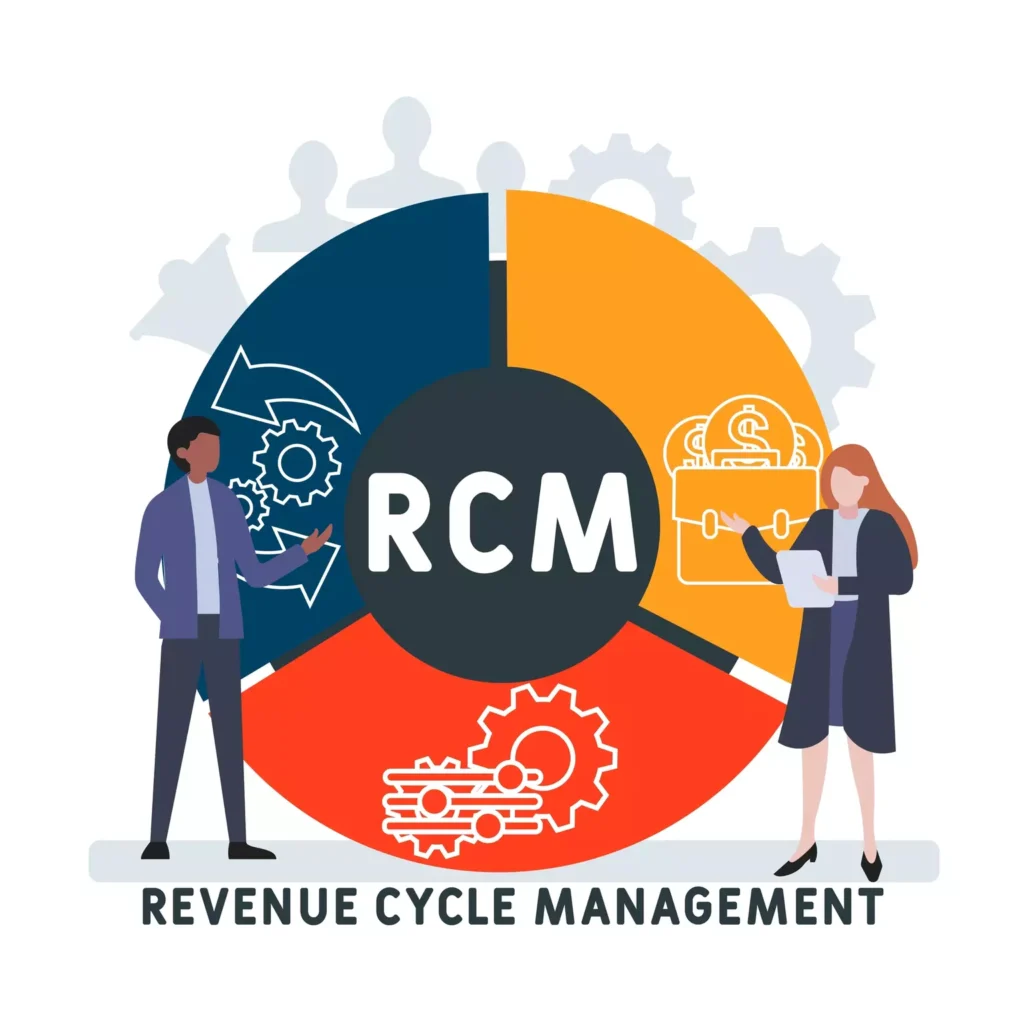Blog Summary:
- Revenue Cycle Management (RCM) spans the full financial process in healthcare, from scheduling to collections, and is essential for accurate reimbursement.
- Providers face recurring challenges such as claim denials, prior authorization delays, and rising patient financial responsibility.
- 7 key technologies—including AI & automation, EHRs, PMS, telehealth, and patient portals—are transforming RCM by reducing errors, streamlining workflows, and boosting revenue.
- A Digital Scientists case study shows AI-driven RCM optimization delivered $12M+ revenue growth and improved patient care.
Managing a healthcare practice involves so much more than just clinical acumen. It demands robust financial operations, streamlined workflows, and the strategic use of technology. That’s where Revenue Cycle Management (RCM) comes into play.
According to AAPC, RCM encompasses the entire financial journey related to a patient encounter, ranging from appointment scheduling to final payment.
When RCM is optimized, it helps create conditions that lead to accurate reimbursement, improved cash flow, and more trusting patient-provider relationships. And, with the market projected to exceed $238 billion by 2030, the importance of RCM only continues to grow.
This is only made truer by the regulatory pressure and rising costs that healthcare organizations continue to face.
Understanding the Revenue Cycle in Healthcare
Revenue cycle management in healthcare happens in 10 distinct but connected stages:
- Appointment scheduling
- Patient registration
- Insurance verification and prior authorization
- Charge capture and medical coding
- Claim submission
- Payment adjudication
- Denial management
- Payment posting
- Patient billing and collections
- Reporting and analytics
The smallest of errors, such as missed prior authorizations, can often lead to costly denials and a significant loss in revenue. Therefore, precision, effective and clear communication, and using the right technology are all vital parts at each step of the RCM process.
Why RCM is a Strategic Imperative
RCM is much more than back-office billing. It supports:
- Staying compliant with regulations and payer rules.
- Making patients happier with clear communication and accurate bills.
- Securing your finances by stopping revenue from leaking away.
- Working more efficiently using automation and smarter workflows.
Top Challenges in Revenue Cycle Management
Healthcare providers face several recurring hurdles when it comes to effective revenue cycle management. These often include:
- Claim denials from coding mistakes.
- Delays in getting prior authorization.
- Disconnected systems that don’t share data.
- Growing patient financial responsibility.
- Confusing payer rules and payment models.

The Top 7 Technologies Fueling the Healthcare Revenue Cycle Management Process
Many of the key technologies powering healthcare RCM are the same key technologies that are essential to healthcare practice management and healthcare innovation on a broader scale. These include:
- Practice Management Systems (PMS): Use a single system to manage scheduling, billing, and insurance for smoother operations.
- Electronic Health Records (EHR): Coordinate care better and reduce errors to improve compliance.
- Telehealth Platforms: Offer more accessible care and cut down on no-shows.
- Clinical Decision Support Systems (CDSS): Make smarter, data-driven decisions for better diagnostic accuracy.
- Artificial Intelligence (AI) and Automation: Automate tasks to increase productivity and accuracy.
- Patient Portals & Mobile Apps: Improve communication and keep patients engaged and satisfied.
- Recovery Software Solutions: Safeguard patient data and ensure your business can continue without interruption.
Case Study: $12M+ Revenue Growth with AI
At Digital Scientists, we leveraged custom AI tools to partner with one acute care provider to resolve their claim denials and coding inefficiencies. The result for the provider was:
- $12 million in added revenue
- 85% first-pass claim approval
- 30% reduction in manual workload
- Improved patient care through better documentation
While this is just one example, it is a clear one that portrays how the future of healthcare revenue cycle management is dependent upon cutting-edge tech and custom solutions.
In Conclusion
Your revenue cycle is about much more than simply collecting payments. It’s about sustaining the health of your practice long-term.
With the right technologies and partners like Digital Scientists, healthcare organizations can turn their RCM into a driver of growth, compliance, and care quality.
Ready to modernize your revenue cycle? Get in touch with us now.


